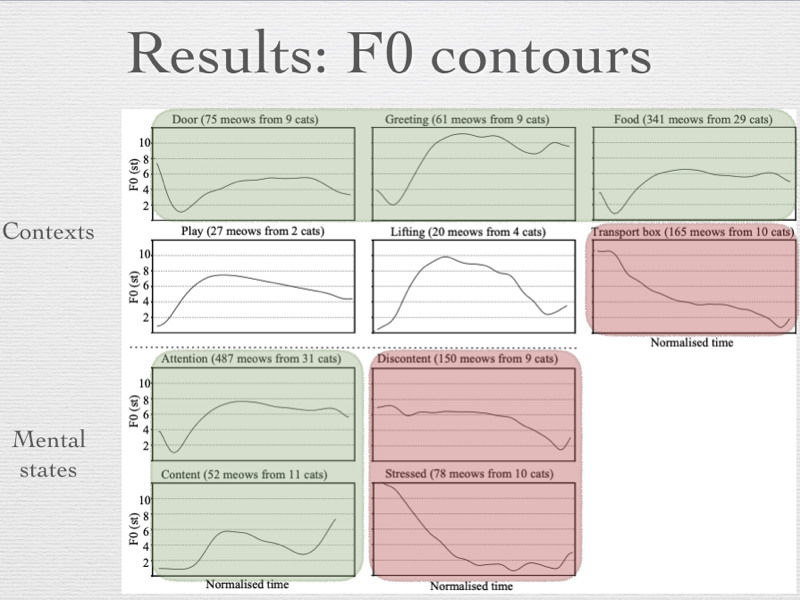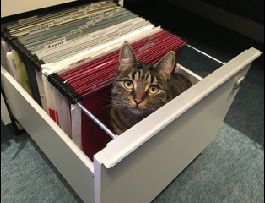STUDY 1
In Study 1 we are investigating how cats vary their melody (intonation) in human-directed and cat-directed vocalisations. How is cat prosody varied in different contexts or situations? How do human listeners perceive this intonational variation? We have collected data from about 70 cats and are comparing the melody in their vocalisations. Our results for the meow vocalisations — which we have presented at one conference in Stockholm and a worskshop in London — indicate that cats vary their melody depending on the context and their mental (emotional) state.

Our first results for the vocalisation type meowing suggest the following:
• Meows in positive and requesting contexts and mental states (highlighted in green in the figure to the left) are often characterised by a short duration, and by a high and rising melody (fundamental frequency; f0).
• Meows in negative contexts and mental states (highlighted in red in the figure to the left) are often chracterised by a long duration, and by a low and falling melody (fundamental frequency; f0).

We collected video and audio data from 70 cats in their homes when interacting with their caretakers in different contexts (e.g. feeding tme, play, when wanting to enter through a closed door, etc.). Most of our participants contacted us and voluntered to participate with their cats in our studies, and we sent them information about the project before we visited them. Although we only wanted to observe the cats interacting with their human caterakers in their homes, we still submitted an ethics application to the Swedish Ethical Review Authority for our project, and also contacted the University Veterinarian at Lund University. They decided that our methods did not require any ethics approval. Recordings took place in three regions of Sweden: Skåne, Stockholm area and Östergötland, and we have recorded cats of different ages, sex and breeds (e.g. Siamese, Maine Coon, Bengal, house cats). We used a video camera (on a tripod), a small action camera (attached to the caretakers' heads), and small bluetooth microphones attached to the cats' collars to collect our data.
This is an example of how we've carried out the data collection. In this video the domestic cat Moses greets his owner with a few meows and gets his dinner.
Our very first pilot data collection in the Meowsic project using multiple cameras.
STUDY 2
Study 2 will apply new methods to examine how cats perceive different prosodic cues in human speech. Do they distinguish between different voices (familiar-unfamiliar, adults-children) and speaking styles (pet-directed, adult-directed), and do they prefer certain intonation patterns?

ADDRESS
Humanities Lab
Box 201, 22100, Lund, Sweden
and
Division of Logopedics, Phoniatrics, and Audiology
Clinical Sciences Lund, Lund University
SE-221 85 Lund, Sweden
CONTACTS
Email: susanne.schotz–at–med.lu.se